
Meet the real literary witches of the 20th century.
A taxonomy.
What is a witch? Unruly, ungovernable. A woman, too sexual or strong-willed for the times. Witch was historically an epithet, given to one who knows the body, the earth, the stars, or even her own mind better than polite society thinks she should.
In recent history, witches have enjoyed a reputational comeback. A canon of witcherature emerges. And a list of contemporary writers working in a “witch aesthetic” could include Mona Awad, impish author of the gothic campus horror novel, Bunny, the conjurer Carmen Maria Machado, or the madcap hyphenate Renee Gladman. And though I cannot explain it? I just know in my bones that Donna Tartt is a witch.
Off this loud and proud supernatural energy, Taisia Kitaiskaia and the illustrator Katy Horan released a tarot deck and a guidebook, Literary Witches: A Celebration of Magical Women Writers, in 2017. And in their shadow—with props to the season—I’ve compiled an ongoing list of the witchiest writers to cast spells on (and probably off) paper.
Here are some of the greatest sorceresses to point pens in the twentieth century.
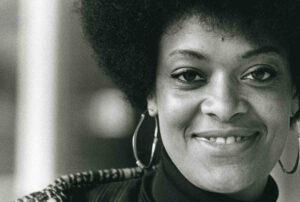
Toni Cade Bambara: The Revolutionary Witch
The American author and activist was known for walking the walk of her Africentric poetics. She referred to her writing as a channeling act, often describing herself as a conduit rather than a creator. And in prose collections like Gorilla, My Love, “Witchbird,” (!) and her opus, The Salteaters, Bambara marries a Black feminist futurist vision with some downright incantatory prose.
A true witch, if ever there was one.

Maryse Condé: The Earthbound Witch
The late Condé was a devoted gardener (witchy). But she also tended to reparative reading. She brought corrective depth to a portrait of one of literature’s best known brujas in her famous novel, I, Tituba: Black Witch of Salem.
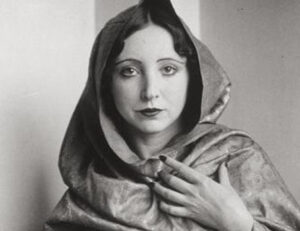
Anaïs Nin: The Love Witch
Just look at this cape, for starters! Furthermore, the famously sex-positive French American diarist wrote the body beautifully. Speaking of her magnetic attraction to Henry Miller, Nin once told The New Orleans Review, ” I never discount the importance of intuition.”
I’ll bet.
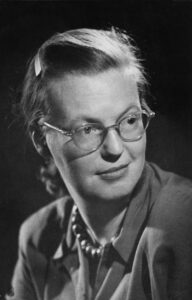
Shirley Jackson: Head Witch in Charge
I needn’t sell you on the witch credentials of Ms. Jackson, who horrified and titillated the world with her haunted mansions and death lotteries. She was notably occult-y, “interested in witchcraft.” And Shirley basically created the aesthetic phenomenon that is “big creepy house is trying to get you.”
Hot take? There’s no Lydia Deetz without We Have Always Lived in the Castle.
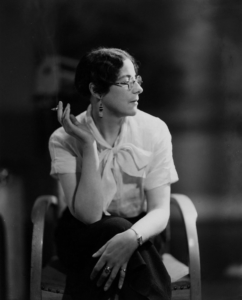
Sylvia Townsend Warner: Witch About Town
A queer, Communist, English author and contemporary of Djuna Barnes and Virginia Woolf (also witches), Warner was an unabashed broomstick-rider, and a peer of the Bright Young Things. Her terrific novel Lolly Willowes looks at a 1920s coven.

Eileen Chang: The Chic Witch
The Chinese American author and screenwriter wrote about troubled romance and betrayal, whenever she wasn’t questioning dominant pious mores. In her collection Written on Water, Chang inhabits a feminist boldness uncharacteristic to her milieu. And yes, okay, looks very cool while doing it.
In Kitaiskaia and Horan’s tarot construction, Chang represents fate. May we all burn so bright.
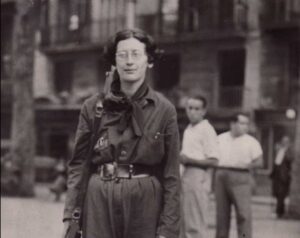
Simone Weil: Holy Witch
The famous spiritualist and author of Gravity and Grace is experiencing something of a posthumous cultural renaissance. Her notes on devotion, attention, and the ablutions that might bring us “closer to the divine” seem to be resonating with our spiritually fallow era. I guess the kids are craving abjection and sincerity.
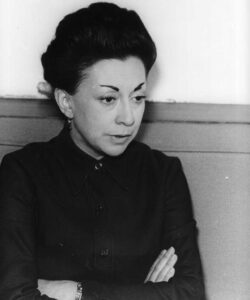
Rosaria Castellanos: The Once and Future Witch
The “visionary Mexican feminist, poet, novelist, and essayist” studied philosophy, and considered Weil a kindred spirit. Her short but dramatic life was framed by visions, and much of her fiction hinged on psychic prophecies.
Her kaleidoscopic masterpiece, The Book of Lamentations, pits Catholicism against a more ancient magic.

Joan Lindsay: One Funny Witch
The acclaimed Australian author of Picnic at Hanging Rock was inspired to craft her uncanny gothic thriller after “a particularly vivid dream.”
A painter, consistently toeing the line of fact and fiction, Lindsay also seemed to believe she could stop clocks with her mind. W(h)ich?! Enough said, mischief managed.

Magda Szabó: Your Basic Witch
A Hungarian novelist best known in the States for off-kilter, perfectly eerie novels like The Door and Abigail, Szabó just gives witch, somehow. And moreover? She’s the witch I want to be.
Her magic is modern, restrained. She wrote about women seeking solitude, and trying to keep secrets inside of fairy tale structures.
Who else are you celebrating, witch-writer-wise? Spell it out below.
Brittany Allen
Brittany K. Allen is a writer and actor living in Brooklyn.



















